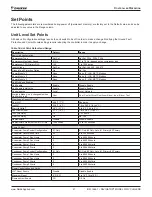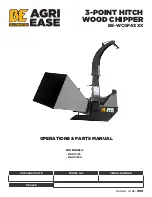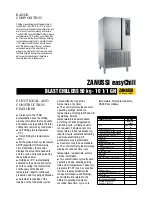
I
nsTallaTIon
and
a
pplICaTIon
C
onsIderaTIons
www.DaikinApplied.com
7
IOM 1264-1 • NAVIGATOR
®
MODEL WWV CHILLERS
I
nsTallaTIon
and
a
pplICaTIon
C
onsIderaTIons
Nameplates
• The unit nameplate is located on the exterior of the Unit
Power Panel. Both the Model No. and Serial No. are
located on the unit nameplate; the Serial No. is unique to
the unit. These numbers should be used to identify the
unit for service, parts, or warranty questions. This plate
also has the unit refrigerant charge and electrical ratings.
• Vessel nameplates are located on the evaporator and
condenser. They have a National Board Number (NB)
and a serial number, either of which identify the vessel
(but not the entire unit).
• Compressor nameplate is located on each compressor
and gives pertinent electrical information.
Receiving and Handling
The unit should be inspected immediately after receipt for
possible damage. All Daikin Applied screw water-cooled
chillers are shipped FOB factory and all claims for handling and
shipping damage are the responsibility of the consignee.
Startup by a Daikin Applied service representative is included
on all Navigator
®
units sold for installation within the U.S.
and Canada and must be performed by them to initiate the
standard Limited Product Warranty. Startup by any party other
than a Daikin Applied service representative will void the
Limited Product Warranty. Two-week prior notification of startup
is required. The contractor should obtain a copy of the Startup
Scheduled Request Form from the sales representative or from
the nearest Daikin Applied service office. A pre-start checklist is
located at the front of this manual.
Installation and maintenance are to be performed only by
qualified personnel who are familiar with local codes and
regulations, and experienced with this type of equipment.
CAUTION
Extreme care must be used when rigging the unit to prevent
damage to the control panels and unit frame. See the certified
dimension drawings included in the job submittal for the
weights and center of gravity of the unit. If the drawings are
not available, consult the local Daikin Applied sales office for
assistance.
WARNING
Sharp edges are a potential injury hazard. Avoid contact with
them.
WARNING
Escaping refrigerant can displace air and cause suffocation.
Immediately evacuate and ventilate the equipment area.
If the unit is damaged, follow Environmental Protection
Agency (EPA) requirements. Do not expose sparks, arcing
equipment, open flame or other ignition source to the
refrigerant.
DANGER
Improper rigging, lifting, or moving of a unit can result in unit
damage, property damage, severe personal injury or death.
Follow rigging and moving instructions carefully.
Avoid rough handling shock due to impact or dropping the
unit. Do not push or pull the unit; a forklift should not be used
to directly lift the unit. Never allow any part of the unit to
fall during unloading or moving as this can result in serious
damage. Use extreme caution when handling the unit to
prevent damage to the control panel and the refrigerant pipes.
The unit must be lifted by connecting rigging in each of the four
corners, where the lifting holes are located on the vessel tube
sheet (see lifting instructions). Spreader bars must be used
along the line connecting the lifting holes to prevent damages
to the electrical panel and the compressor terminal bo. Do not
use any other point to lift the machine. (see
Figure 1
). Various
lifting lugs and lifting holes are available on the unit to assist
in servicing the unit or lifting components with the knockdown
option. These component lugs should not be used for lifting the
unit.
Figure 1: WWV Unit Rigging
NOTE:
1. Lengthwise spreader bars and anti-rolling chains
must be used to avoid damage to unit. The spreader
bars in
Figure 1
are a representation only and may
not reflect the appearance of the actual spreader bars
needed.
2. The actual unit configuration may vary from this
diagram. See the dimensional drawing section
beginning on
page 19
to identify the lifting point
locations and weights based on specific unit model.
Lifting instructions:
1. Rigging equipment, lifting accessories and handling
procedures must comply with local regulations and
legislation.
2. To lift the machine, use only the holes on the heat
exchangers.
3. The rigging equipment and hooks used must have
capacity suited to the load. Check the nameplate on the
unit that indicates the machine weight.
4. The installer must correctly select and use lifting
equipment. It is recommend to use cables with minimum
Содержание Navigator WWV
Страница 4: ......








































